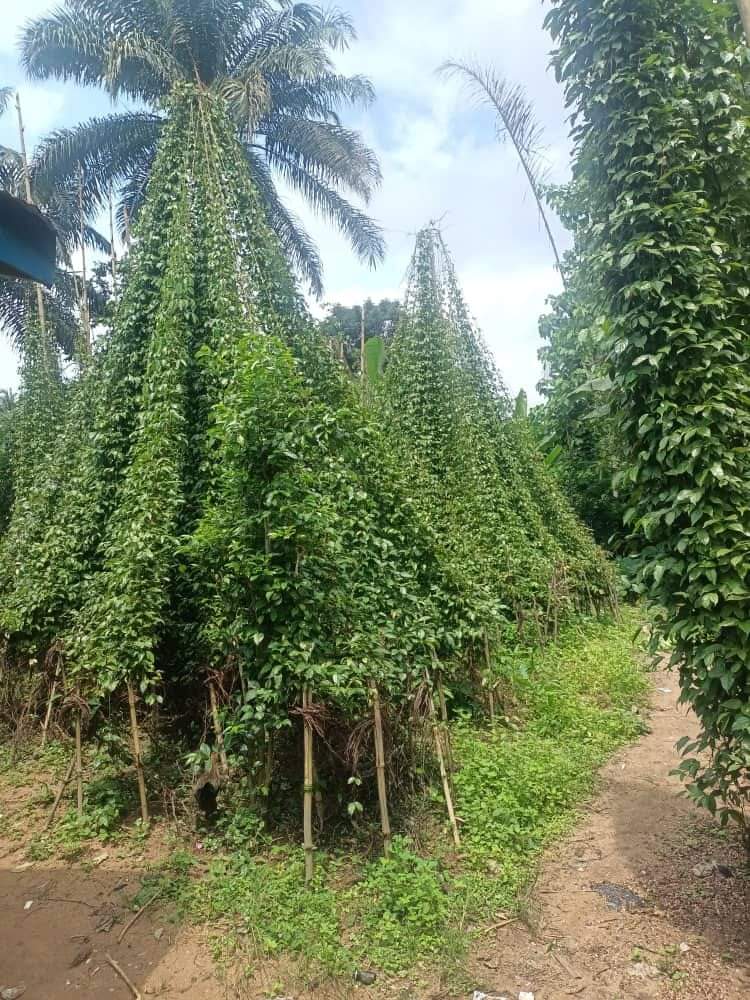Opinion
Opinion: Afang soup from Nigeria, Cameroon to Angola, the undefeated delicacy

Settling The Debate …..
By:
Uko-obong Efiok
According to 2014 survey it’s said that about 2,500-4,000 tons of Afang (Tata leaf), botanically known as ‘Gnetum Africanum’ are exported from Cameroon, Gabon, Congo Brazaville, and Central African Republic to Nigeria annually.
Indigenous Names: English (eru); French (koko); Ibibio -Afang, Igbo (Okazi); Portuguese (nkoko). Gnetum africanum is mostly found at the periphery of primary forest and in secondary forest. It extends in distribution from South East Nigeria, to Congo and as far as Angola in the south.
While eru is said to be it English name. I rely with the other name ” Tata leaf”, that is what my Agricultural science teacher taught me while in Secondary School but my research to reverify the name from other sources of information about the celebrated economic wild crop isn’t matching. Eru is said to be the English name instead. My material for the research may not be enough.
According to research, these species is found from west central tropical Africa to Angola including Central African Republic, Cameroon, Gabon, Democratic Republic of the Congo, Congo Brazaville and Angola.
Angola; Cameroon; Central African Republic; Congo Brazaville; The Democratic Republic of Congo; Gabon. Gnetum africanum occurs naturally in the humid forest zones from Nigeria to the Central African Republic and to Angola. Origin, Botanical Information and geographic distribution. Gnetum africanum is one of the most popular green leafy vegetable in Nigeria and is gaining equal popularity as a delicious food leaf in other African countries such as Cameroon, Gabon, Congo and Angola (Eyo and Abel, 1983).
According to the most reliable online encyclopedia the Wikipedia source, it’s aslo stated that Gnetum africanum (Afang) grows as a wild evergreen climbing plant in the rainforest of Nigeria where it is searched for and highly priced in the regional markets. It is recently being cultivated in South Eastern Nigeria.
No doubt, in Nigeria, the two Gnetum species are called Okasi by the Igbo tribe while the Efik/Ibibio people named them Afang.
In Congo-Brazzaville, the leaves of both species are used as a dressing for warts and boils and a tisane of the cut-up stem is taken to reduce the pain of childbirth. Gnetum africanum is also reported to be used for medicinal purposes in Mozambique.
Gnetum comprises approximately 35 species of small trees, shrubs or most often lianas, found in tropical South and Central America (about 7 species), Africa (2 species) and Asia (about 25 species).
They look much like dicotyledonous flowering plants (having opposite leaves with a net venation and cherry-like seeds), although in fact they are gymnosperms. commercial crop (Gnetum africanum or G.buchholzianum) male inflorescence.
Down to Cameroon, in Anglophone Cameroon, they are known as eru, while in Francophone Cameroon the name okok is applied.
Afang is one of the commonest vegetables eaten in Cameroon as salad.
A source of income: for example the Bayangi in Cameroon that consider their traditional meals prepared with Gnetum leaves as very unique to them.
Economically, Gnetum leaves sustain an active cross-border multimillion trade stretching from West and Centre Africa to Europe and America. Among the Efik Ibibio people in the South Southern region of Nigeria Afang leaves has been commercialised and indigenous people earn somuch profits because of it high demand.
Food: Nigerian food, Afang Soup is ranked, one of the most popular delicious soups in West Africa. Afang is a vegetable soup, African Report files learnt that its originated from the Efik people of the Efik kingdom in Cross River State and the Ibibio People of Akwa Ibom in Southern Nigeria.
It is a dish popularly known by Nigerians and also some parts of Africa. It is especially popular among the Ibibio people of Akwa Ibom and Cross River state who have adopted this cuisine as part of their cultural identity.
Nutrition: It is very rich in proteins and minerals. The leaves contain high nutritional values as both species contain eight essential amino acids in significant quantities (Mialoundama 1993). This suggests the potential role of these species in the fight against malnutrition in poor rural areas with limited sources of meat.
Settling The Debate
There have been whirl trending debate on the Nigerian Social media communities as Afang soup is been compared to other insignificant local food. I spent my time to carry on a research for this leaf to prove my loyalty to Afang soup. I hereby conclude that Afang is the general overseer of them all. I rest my case for today in Solidarity With Afang addicts !
To Be Continued!

































